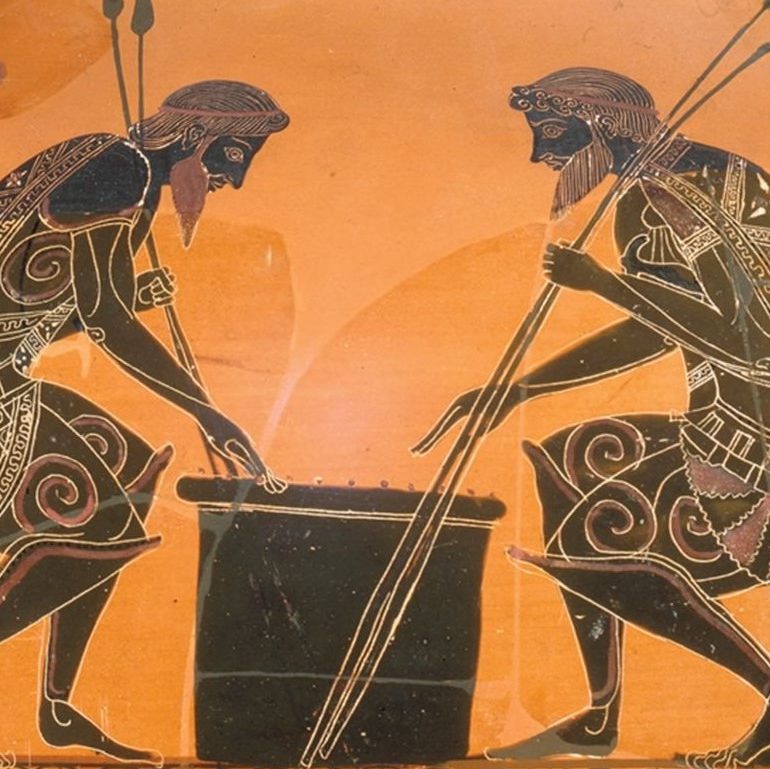When Julia Dean went to live and work in Maine as an apprentice to famed photographer Berenice Abbott, Julia had just completed her Bachelor of Science degree in photography at the Rochester Institute of Technology. Julia was 23 and Abbott was 80. Julia was her last apprentice.
Abbott had first made her reputation in 1920s Paris, where she photographed many of the literary and artistic greats who made that city in that decade a synonym for the furor of urban artistry. Pick up any paperback you have of James Joyce, and the portrait on the back cover is almost certainly by Abbott. Julia owns three images by Abbott of Joyce’s daughter, Lucia, dancing in their Paris apartment. Says Wikipedia,
According to Sylvia Beach, “To be ‘done’ by Man Ray or Berenice Abbott meant you rated as somebody”.[9]
While in Paris, Abbott was one of those who became aware of the work of the little known Eugene Atget, among whose great achievements was a thirty-year photographic record, from 1897-1927, of a Paris now gone.
Berenice Abbott was the key that unlocked Atget’s Paris for the rest of the world. She got to know him in the 1920s, when she was an assistant to Atget’s Montparnasse neighbor Man Ray. She attempted to help Atget achieve greater recognition during his lifetime by sending friends to purchase his work and by making a celebrity-style photographic portrait of him. After Atget’s death in 1927, she acquired a large part of his archive and exhibited, printed and wrote about his work, as well as assembled a substantial archive of writings about his portfolio by herself and others. In 1968, Abbott arranged for New York‘s Museum of Modern Art to buy this archive, and through a series of MoMA exhibitions and publications Atget finally entered the pantheon of “Masters” of photography.[1]

In the 1930s, Abbott was in New York City.
Abbott photographed New York City with the diligence and attention to detail she had so admired in Eugène Atget. Her work has provided a historical chronicle of many now-destroyed buildings and neighborhoods of Manhattan.
Abbott worked on her New York project independently for six years, unable to get financial support from organizations (such as the Museum of the City of New York), foundations (such as the Guggenheim Foundation), or even individuals. She supported herself with commercial work and teaching at the New School of Social Research beginning in 1933.[14] In 1935, however, Abbott was hired by the Federal Art Project (FAP) as a project supervisor for her “Changing New York” project. She continued to take the photographs of the city, but she had assistants to help her both in the field and in the office. This arrangement allowed Abbott to devote all her time to producing, printing, and exhibiting her photographs. By the time she resigned from the FAP in 1939, she had produced 305 photographs that were then deposited at the Museum of the City of New York.[13]
A third major period in Abbott’s career was her work in scientific photography.

Julia’s year with Abbott changed her life and career. She went on to earn her master’s degree in journalism at the University of Nebraska, where she began her own teaching career, and remained friends with Abbott until Abbott’s death at 93. She has maintained a life-long friendship with Abbott’s biographer, Hank O’Neal, and has been inspired in her career by the standards she learned from Abbott and the particular processing skills gained from many hours in the dark room with Abbott. Several years ago, now the owner of her own photo workshop school in Venice, California, Julia established The Berenice Abbott Prize for an Emerging Photographer in order to honor her mentor.
For the past few months, Julia has been reproducing and posting the entries from the journal she kept of her year as Berenice Abbott’s last apprentice. Today, she posts the first of a several-part epilogue, written in the present, to close the journal, reflecting on the meaning of the experience to her. If you haven’t yet checked in on the journal, you can catch up. You can see the recorded detail of an education in photography, the life of a great artist near the end of her career, and the many facets of a young woman preparing for the life and work ahead. Wrote Julia in her last entry,
I am feeling rather lonely, unable to sort out what’s boggled up in my head. What’s next? Why? What are the reasons for my constant search? Is it because I’ve not found happiness? No. I’m generally very happy wherever I am. Why the search? I’m not content in one place. I must keep going, advancing, learning, doing. Stagnation scares me.
Only one life and a short one at that. A lot to do, places to go. I’d love to share my desires with someone, but so far any relationship that I might have let myself settle into would hold me down.
That relationship would be with me, but not for seventeen years.
AJA
———–
Related articles by Zemanta
- Picture This: 1 (sadredearth.com)
- Art Review: MoMA’s ‘Original Copy,’ Photos Meet Sculpture (nytimes.com)


A wonderful post!
How delightful for you to have someone as beautiful and accomplished as your Julia to share life.